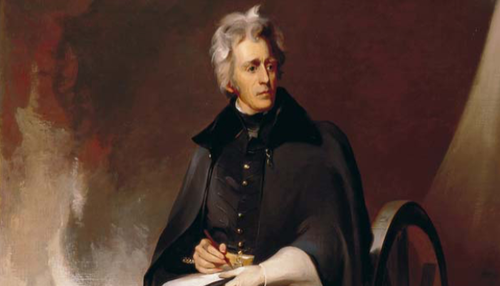The People Vs. The Fed: What Political Movement Will Silicon Valley Bank’s Failure Spark?
Authored by Athan Koutsiouroumbas via RealClear Wire,
In bucolic Indiana, Pennsylvania, residents have started an “It’s a Wonderful Life Festival.”
The town’s Christmas celebration commemorates both favorite son Jimmy Stewart, who starred in the iconic movie, and the story’s message of redemption and hope.
In the film, a bank run threatens to devastate an affordable-housing business run by George Bailey, Stewart’s character. The Great Depression has come to Bedford Falls. With over 9,000 banks failing during that period, bank runs were common.
For nearly 100 years since that fictional Beaver Falls bank run, the federal government has insured bank depositors for the purpose of stopping bank runs, which have historically triggered economic depressions. That decision was part of a sweeping political movement in response to the financial crisis of the 1930s: the New Deal.
Could a political movement arise from the recent failure of Silicon Valley Bank, which collapsed in mere hours? That question may be best answered by looking to the distant past.
In what came to be known as the “Bank War,” President Andrew Jackson made it his mission to dismantle the U.S. National Bank, which many blamed for triggering the Panic of 1819. Elected in 1828, just forty years after George Washington was inaugurated, the nation’s first populist president consolidated a political base against federal overreach. He succeeded by stopping the bank from being rechartered.
Near the end of the nineteenth century, the Panic of 1893 catapulted an unknown congressman from Nebraska to the Democratic Party’s 1896 presidential nomination. Comparing the economic plight of common Americans to a crucifixion, William Jennings Bryan heralded the arrival of the Progressive Era, which would legislate against the excesses of the Gilded Age.
A decade and a half later, the Panic of 1907 gave Democrats momentum to seize unified control of Congress and the White House. Signed into law in 1913 by President Woodrow Wilson, the Federal Reserve Bank created a nationalized system to regulate banking. Wilson’s presidency would be the pinnacle of the Progressive Era.
In 1929, the stock market’s Black Tuesday triggered a series of bank runs that cratered the American economy. The ensuing destitution deeply scarred a generation of Americans and realigned the electorate, which chose Franklin D. Roosevelt to implement the New Deal – the largest expansion of the federal government in American history.
A half-century later, stagflation – inflation without economic growth – during the Carter administration culminated with a run on First Pennsylvania Bank in 1980, resulting in the third-largest bank bailout in American history. Voters’ response was to launch the Reagan Revolution, which would attempt to pare back some of the New Deal. A former New Dealer himself, Reagan advocated for the restoration of federalism as the key to economic stability and growth.
The Great Recession of 2008 was triggered by a banking failure totaling trillions of dollars. The federal response, the Troubled Assets Relief Program, sought to backstop the failing financial system – but its massiveness also helped give rise to the Tea Party, which preached a small-government ethos. In 2016, that conservative political movement would help elect Donald Trump, who campaigned against the excesses of a federal government in which millions of Americans had lost faith.
Each of these six major financial panics launched a political movement. Americans were evenly split on choosing conservative and liberal solutions to the financial challenges they faced. The response to the Panic of 2023 will be the tiebreaker.
One thing is clear. At $319 billion and counting, the failures of Silicon Valley Bank and Signature Bank alone in the last two weeks are already on par with the entire 2008 financial crisis, which saw 25 banks failing, with $373 billion in combined assets. And with $620 billion of unrealized losses that triggered this crisis still pending, we may be just getting started.
What path policymakers will choose this time around is unclear. The country has never been more evenly split politically. Meanwhile, the regulatory system has attempted to stem the tide without the involvement of Congress or the White House. A political reconciliation, in other words, has been deferred.
Political issues come and go, but financial panics create political movements because they hit Americans directly, in their bank accounts. Voters pay attention.
The movement that results from this panic will depend ultimately on whom voters blame for it. That scapegoat, whether real or imagined, will determine where on the political spectrum the movement leans.
Many Americans continue to identify government itself as the top non-economic issue they face. Inflation, a problem created by government, is their top economic problem. Most Americans believe the federal government is too big and doing too much. In places like real-life Indiana, Pennsylvania or fictional Beaver Falls, it is abundantly clear that Americans have lost faith in their leading institutions.
“You sit around here and you spin your little webs and you think the whole world revolves around you and your money,” George Bailey tells his antagonist in “It’s a Wonderful Life.”
Bailey was referring to the machinations of a powerful banker, but his words are fitting in an unintended sense, too: in American politics, realignments begin because the world revolves around voters and their money.
Tyler Durden
Wed, 03/22/2023 – 00:05
via ZeroHedge News https://ift.tt/erAgSNa Tyler Durden
